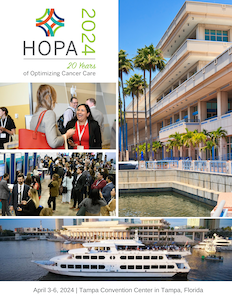Back
Trainee Research
Category: Malignant Hematology
(156) Incidence of hypersensitivity and infusion reactions with pegasparaginase using different dosing strategies
Friday, April 5, 2024
12:00 PM – 2:00 PM ET
- FM
Fraisher Morales, PharmD (he/him/his)
PGY-2 Oncology Pharmacy Resident
St. Luke's Cancer Institute
Boise, Idaho, United States
Presenting Author(s)
Poster Abstract:
Background: Hypersensitivity reactions are one of the primary reasons for the permanent discontinuation of pegasparaginase in patients receiving treatment for acute lymphoblastic leukemia (ALL). Careful prevention and management of hypersensitivity reactions are routinely performed because treatment discontinuation poses a significant challenge in achieving optimal outcomes for patients with ALL. A guideline formulated by Bade and colleagues recommends a dose of 2500 IU/m2 intravenously, capped at 1 vial (3750 IU), aligning with Bruner-Frankfurt-Munich-inspired regimens such as CALGB 10403. However, lower doses may be sufficient in achieving the asparaginase activity level target in regimens utilizing pegasparaginase. Thus, the optimal dose of pegasparaginase remains a subject of controversy.
Objective: The aim of this medication use evaluation is to assess hypersensitivity and infusion reactions, along with different dosing strategies of pegasparaginase, in adult ALL patients at a community cancer institute.
Methods: A retrospective chart review of adult patients who received pegasparaginase while undergoing treatment for ALL Administrations of pegasparaginase between January 2017 and December 2023 will be collected and analyzed regarding the incidence of pegasparaginase hypersensitivity and infusion reactions.
Results: To be presented at the 2023 HOPA Annual Meeting in Tampa, Florida.
References (must also be included in final poster): 1. Bade NA, Lu C, Patzke CL, et. al. Optimizing pegylated asparaginase use: an institutional guideline for dosing, monitoring, and management. J Oncol Pharm Pract. 2020 Jan;26(1):74-92.
2. Kloos RQH, Mathôt R, Pieters R, van der Sluis IM. Individualized dosing guidelines for pegasparaginase and factors influencing the clearance: a population pharmacokinetic model. Haematologica. 2021 May 1;106(5):1254-1261.
3. Zheng W, Ren H, Ke X, et. al. Pegasparaginase in BFM-90 regimen improves outcomes in adults with newly diagnosed lymphoblastic lymphoma. Chin J Cancer Res. 2017 Feb;29(1):66-74.
4. Baruchel A, Brown P, Rizzari C, et. al. Increasing completion of asparaginase treatment in childhood acute lymphoblastic leukaemia (ALL): summary of an expert panel discussion. ESMO Open. 2020 Sep;5(5):e000977.
5. Aldoss I, Yin J, Wall A, et. al. The impact of early PEG-asparaginase discontinuation in young adults with ALL: a post hoc analysis of the CALGB 10403 study. Blood Adv. 2023 Jan 24;7(2):196-204.
6. Burke MJ, Devidas M, Maloney K, et. al. Severe pegaspargase hypersensitivity reaction rates (grade ≥3) with intravenous infusion vs. intramuscular injection: analysis of 54,280 doses administered to 16,534 patients on children's oncology group (COG) clinical trials. Leuk Lymphoma. 2018 Jul;59(7):1624-1633.
7. Patel B, Kirkwood AA, Dey A, et. al. Pegylated-asparaginase during induction therapy for adult acute lymphoblastic leukaemia: toxicity data from the UKALL14 trial. Leukemia. 2017 Jan;31(1):58-64.
Background: Hypersensitivity reactions are one of the primary reasons for the permanent discontinuation of pegasparaginase in patients receiving treatment for acute lymphoblastic leukemia (ALL). Careful prevention and management of hypersensitivity reactions are routinely performed because treatment discontinuation poses a significant challenge in achieving optimal outcomes for patients with ALL. A guideline formulated by Bade and colleagues recommends a dose of 2500 IU/m2 intravenously, capped at 1 vial (3750 IU), aligning with Bruner-Frankfurt-Munich-inspired regimens such as CALGB 10403. However, lower doses may be sufficient in achieving the asparaginase activity level target in regimens utilizing pegasparaginase. Thus, the optimal dose of pegasparaginase remains a subject of controversy.
Objective: The aim of this medication use evaluation is to assess hypersensitivity and infusion reactions, along with different dosing strategies of pegasparaginase, in adult ALL patients at a community cancer institute.
Methods: A retrospective chart review of adult patients who received pegasparaginase while undergoing treatment for ALL Administrations of pegasparaginase between January 2017 and December 2023 will be collected and analyzed regarding the incidence of pegasparaginase hypersensitivity and infusion reactions.
Results: To be presented at the 2023 HOPA Annual Meeting in Tampa, Florida.
References (must also be included in final poster): 1. Bade NA, Lu C, Patzke CL, et. al. Optimizing pegylated asparaginase use: an institutional guideline for dosing, monitoring, and management. J Oncol Pharm Pract. 2020 Jan;26(1):74-92.
2. Kloos RQH, Mathôt R, Pieters R, van der Sluis IM. Individualized dosing guidelines for pegasparaginase and factors influencing the clearance: a population pharmacokinetic model. Haematologica. 2021 May 1;106(5):1254-1261.
3. Zheng W, Ren H, Ke X, et. al. Pegasparaginase in BFM-90 regimen improves outcomes in adults with newly diagnosed lymphoblastic lymphoma. Chin J Cancer Res. 2017 Feb;29(1):66-74.
4. Baruchel A, Brown P, Rizzari C, et. al. Increasing completion of asparaginase treatment in childhood acute lymphoblastic leukaemia (ALL): summary of an expert panel discussion. ESMO Open. 2020 Sep;5(5):e000977.
5. Aldoss I, Yin J, Wall A, et. al. The impact of early PEG-asparaginase discontinuation in young adults with ALL: a post hoc analysis of the CALGB 10403 study. Blood Adv. 2023 Jan 24;7(2):196-204.
6. Burke MJ, Devidas M, Maloney K, et. al. Severe pegaspargase hypersensitivity reaction rates (grade ≥3) with intravenous infusion vs. intramuscular injection: analysis of 54,280 doses administered to 16,534 patients on children's oncology group (COG) clinical trials. Leuk Lymphoma. 2018 Jul;59(7):1624-1633.
7. Patel B, Kirkwood AA, Dey A, et. al. Pegylated-asparaginase during induction therapy for adult acute lymphoblastic leukaemia: toxicity data from the UKALL14 trial. Leukemia. 2017 Jan;31(1):58-64.

